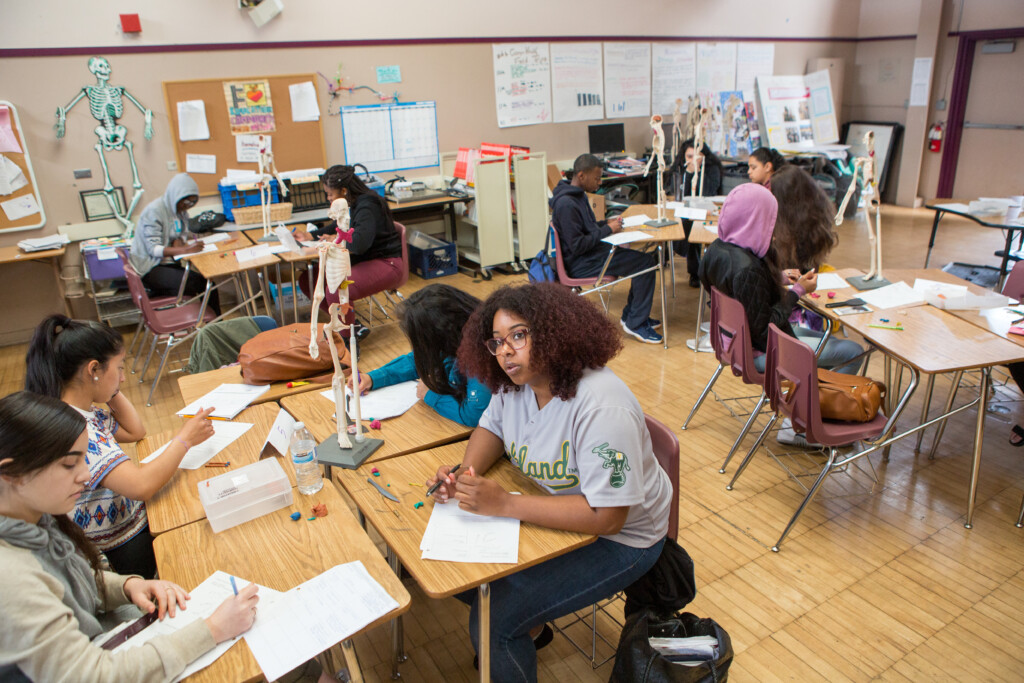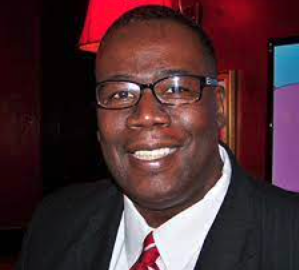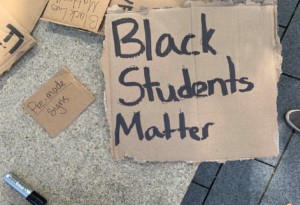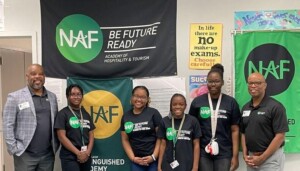Understanding Interventions: Broadening The Impact of Science
Key Points
-
We must move from the “what” questions to the “why” questions regarding representation.
-
Skills and resilience are essential aspects of increasing representation.

When it comes to providing equal opportunities in STEM fields, I am always searching for organizations and individuals who are making a positive impact. Dr. Anthony DePass and Understanding Interventions (UI) are among these significant changemakers. UI acknowledges the lack of representation of certain groups in STEM education and careers and aims to address this issue.
Understanding Interventions has three main goals:
- First, to provide new insights into teaching, learning, and training through research.
- Second, to enhance the community that understands and utilizes the results of educational interventions, by sharing information and fostering collaborations.
- Third, to provide training and professional development for all STEM personnel, with the goal of increasing diversity in the field.
Nearly two decades ago, Understanding Interventions was born out of a workshop that was a collaboration between the National Research Council and the National Institute of General Medical Sciences. Its mission is to translate insights for those responsible for educating students in STEM, to equip them with the skills and resilience needed to succeed in their careers and contribute to society. UI seeks to develop strategies and offer tools that aid practitioners in serving students and accumulating knowledge.
Currently, black, and Latino students face high dropout rates in STEM Ph.D. programs, with 46% leaving before completion and 45% taking up to seven years to finish. Understanding Interventions is working towards changing these statistics by innovating programs that educate and empower students. Patrick Valdez, of the American Association of Hispanics in Higher Education, believes that “our programs must also be innovative” to shape the next generation of innovators.
I had the opportunity to ask Dr. Anthony DePass, one of the founders of UI, a few questions about the organization and its goals:
What was the impetus to start Understanding Interventions?
While there has been a long history of developing opportunities and programs to address broadening participation in science careers, much of this has been fueled by intuition and not necessarily by empirical research. This is not to say that research has not been conducted in this area. However much of this research is academically focused and not necessarily looking at translational implications. In other words, much of the research has not necessarily been sufficiently informed by practice and is often published in journals that practitioners do not read, and even if they were to read it the language can be impenetrable. In 2006, Clif Poodry, the former leader of the National Institutes of Health’s division for Training, Workforce Development, partnered with the National Research Council to investigate this issue. Clif joined the NIH back in the mid-1990s, and his efforts really pushed the idea of accountability where programs or the grant proposals to fund programs needed to start having mechanism by which they would set clear objectives and do the proper assessment to see if those objectives are being met. The next step that Clif from this foundation of accountability was to do work on the scholarship of interventions- moving from the “what,” to asking the “why” questions.
The need for such an effort was demonstrated when a program set up to fund this type of work and disappointingly, many of the proposals failed to pose the kind of questions or employ the appropriate methodologies were appropriate to gain deeper understanding the interventions that were being utilized. These approaches and methodologies required deeper integration of those used in the social and behavioral sciences, while most practitioners and emerging researchers in this translational space were in the basic sciences like biology chemistry and math. The research involved the study of non-cognitive aspects and psychosocial factors that would be predictive or significantly influence decision and performance outcomes for individuals pursuing STEM and STEM-related careers.
This collaboration resulted in the formation of a committee that was Co-Chaired by me and Larry Hedges distinguished professor at Northwestern University, I was a professor at Long Island University at the time, where I ran several programs, and served as program evaluator and grant reviewer for many programs targeting diversity in STEM. At the end of the year, the work of the committee culminated in a workshop in Washington DC. That workshop brought together individuals from communities of practice and research, and it was clear that an area of research that is more translational needed to be defined, with venues set for collaboration across communities, and dissemination of this work.
How has Understanding Interventions changed the STEM landscape for students?
Understanding Interventions stands to significantly impact the STEM landscape as it creates opportunities for many to develop deeper understanding of the components and factors that impact decision making and performance outcomes as it relates to STEM, especially from those individuals from underserved and marginalized communities. We see not only the generation of scholarship in this area, but that translation of the scholarship into interventions in the classroom and in the laboratory, as well as in other spaces where we train the next generation for the STEM workforce. It is through informed approaches related to STEM teaching, learning and engagement that we will more effectively expand diversity in our STEM pathways, as well as significantly integrate the careers that by necessity requires deeper understanding of STEM and quality training in STEM areas.
How has it helped STEM practitioners?
Understanding Interventions, through its training activities, dissemination of research, and the provision of resources facilitate informed practices leading to more productive outcomes related to broadening participation in STEM. There is significant evidence that some of what we see as positive outcomes from several programs and activities might have been through selection and cherry picking, rather than development of talent in individuals who otherwise would not be in STEM. We see Understanding Interventions and the work that comes out of the conferences the journal and the other resources in terms of access to the literature as helping to inform practitioners and inform activities so we can be much more effective not only in training individuals, but also bringing in communities that have been previously marginalized and minoritized and frankly excluded from this space.
What is the most significant challenge for students and practitioners of color in STEM careers?
Unfortunately, we have disproportionate numbers of students of color who also are from lower socioeconomic classes in this country, and many others in the world. Consequently, there are issues of access and not only to equipment and facilities but also to qualified teachers in this space. Success in STEM often means early access and early interventions. The realities would make it lacking for certain aspects of the population and as a result make it challenging for members of these minoritized and marginalized communities to successfully pursue STEM in ways that reflect their representation in the general population.
What do you hope Understanding Interventions will accomplish in the next five years?
Understanding Interventions since 2007 has developed a strong community spanning several areas. We have not only trained emerging scholars and practitioners, but we have also curated scholarships in this area. We have launched an Understanding Interventions Journal that serves as a venue for published work in this area. We have also developed the UI Index that is a curated database of articles and other information that individuals who want to perform scholarship in this area or are practitioners who are looking to locate aggregated published work on Interventions. Our annual conferences provide venues for dissemination, and in finding and networking with colleagues in the areas of scholarship, practice, and evaluation. These opportunities facilitate collaboration and discourse.
This year, we released UI IMPACTS (Inclusive Matching for Professional Advancement and Inclusion in Science) that serves as a public square for STEM. This is a social media platform that allows individuals in all areas of STEM at all levels to interact, find opportunities for mentoring, locate opportunities for post-secondary STEM training and adds a social context that STEM has lacked historically. Here is where individuals can network, form groups based on interests, recruit and provide relevant information to be recruited as users can develop and maintain a portfolio of the work that they have done across several media. There are also opportunities to include information on prior training, personal statements, and other information useful such that venues training and academic programs as well those for potential employment to identify potential candidates. This is especially valuable for those from minorities and marginalized communities. We are potential employers and programs have struggled with recruitment.
We see the Understanding Interventions community growing significantly over the next five years. Our last meeting had nearly 250 registrants we see that significantly increasing as we embark on broader collaborations with programs and the National Institutes of Health the National Science Foundation and many other agencies that provide funding that could leverage the information and training that understanding interventions provides.“Finding information about women in science and engineering, as well as underrepresented minorities in these fields, is not a challenge. However, it can be difficult to locate information about the intersection of both.” This statement was made by Mahlet Mesfin from the American Association for the Advancement of Science. Understanding Interventions is broadening the impact of science by bridging these gaps and igniting innovation!








0 Comments
Leave a Comment
Your email address will not be published. All fields are required.